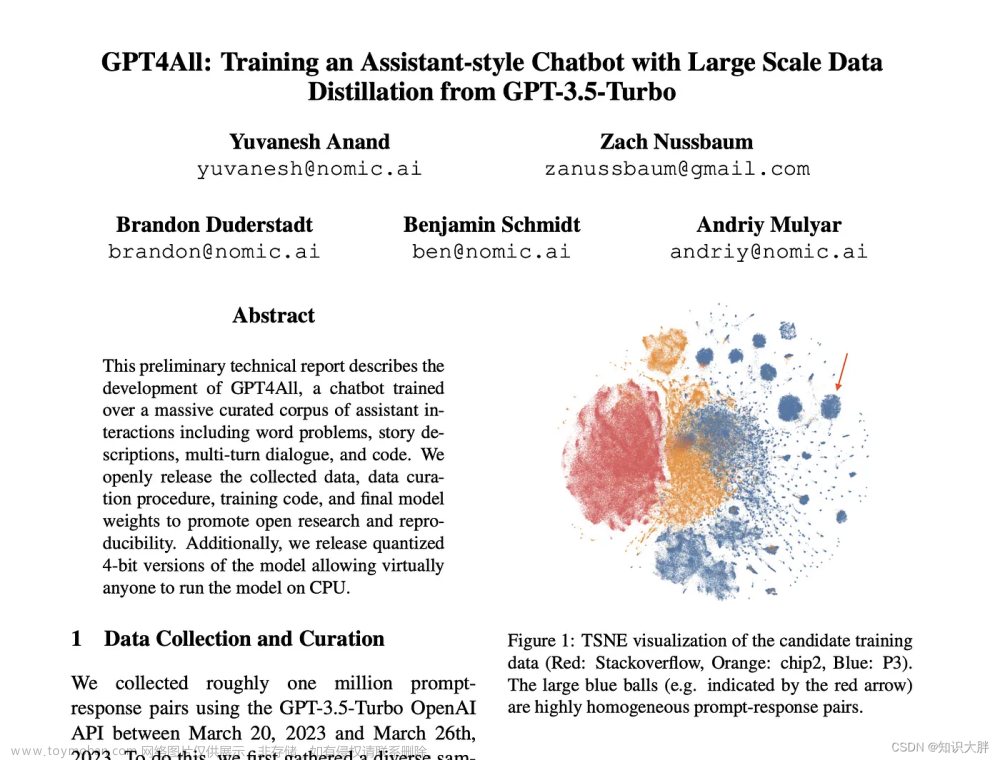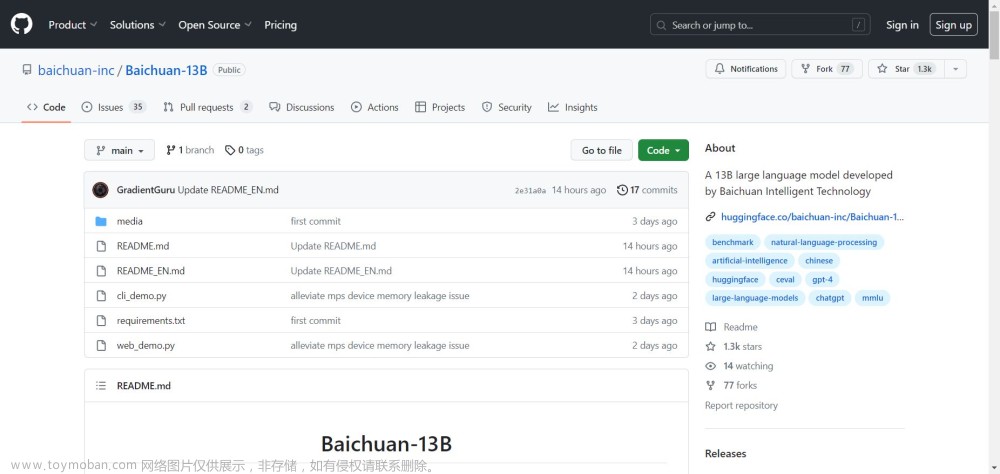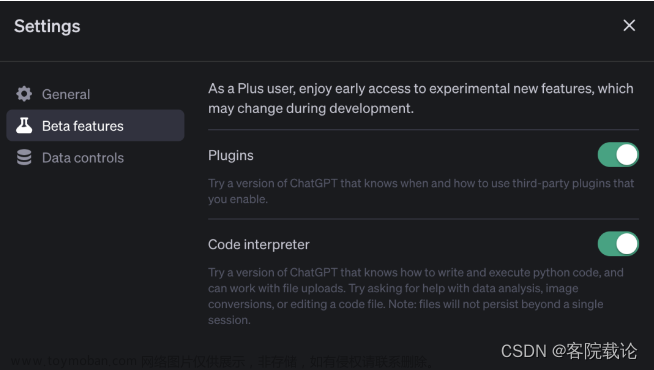代码地址:https://github.com/taishan1994/sentencepiece_chinese_bpe
Part1前言
目前,大语言模型呈爆发式的增长,其中,基于llama家族的模型占据了半壁江山。而原始的llama模型对中文的支持不太友好,接下来本文将讲解如何去扩充vocab里面的词以对中文进行token化。
Part2数据预处理
对斗破苍穹语料进行预处理,每一行为一句或多句话。
with open("data/《斗破苍穹》.txt", "r", encoding="utf-8") as fp:
data = fp.read().strip().split("\n")
sentences = []
for d in data:
d = d.strip()
if "===" in d or len(d) == 0 or d == "《斗破苍穹》来自:":
continue
sentences.append(d)
with open("data/corpus.txt", "w", encoding="utf-8") as fp:
fp.write("\n".join(sentences))
最终得到corpus.txt。
Part3sentencepiece
首先,我们需要去构建中文的词库。一般的,目前比较主流的是使用sentencepiece训练中文词库。安装指令也很简单:pip install sentencepiece。然后,我们准备好语料,这里我们使用的语料是斗破苍穹小说。
直接看代码:
import sentencepiece as spm
spm.SentencePieceTrainer.train(
input='data/corpus.txt',
model_prefix='tokenizer',
vocab_size=50000,
user_defined_symbols=['foo', 'bar'],
character_coverage=1.0,
model_type="bpe",
)
这里讲下每个参数的作用:
input:指定输入文本文件的路径或者是一个目录,可以指定多个输入文件或目录。其中每一行可以是一句话或者多句话。 tokenizer:保存的模型的名称前缀。 vocab_size:设置的词表大小。 user_defined_symbols:用于指定用户自定义的符号。这些符号将会被视为单独的 Token,不会被拆分成子词。这个参数的作用是将一些用户定义的特殊符号作为一个整体加入到生成的词表中,以便于后续的模型使用。这里我们简单进行了测试。 model_type: 指定模型的类型,有三种可选参数:unigram, bpe, char. word。 character_coverage指定覆盖字符的数量,可以理解为限制字符集的大小。默认值为 1.0,即覆盖全部字符。 unk_id: 指定未登录词的 ID 号,即在词表中为未登录词分配一个整数 ID。默认值为 0。 bos_id: 指定句子开头符号的 ID 号,即在词表中为句子开头符号分配一个整数 ID。默认值为 1。 eos_id: 指定句子结束符号的 ID 号,即在词表中为句子结束符号分配一个整数 ID。默认值为 2。 pad_id: 指定填充符号的 ID 号,即在词表中为填充符号分配一个整数 ID。默认值为 -1,即不使用填充符号。
运行后会得到tokenizer.model和tokenizer.vocab两个文件。
我们来看看tokenizer.vocab里面是什么:
<unk> 0
<s> 0
</s> 0
foo 0
bar 0
萧炎 -0
.. -1
▁“ -2
也是 -3
便是 -4
了一 -5
。” -6
除了一些特殊符号外,还有我们自定义的foo和bar,其余的一些词是BPE训练得到,具体什么是BPE算法这里不作展开了。
Part4怎么使用transformers库加载sentencepiece模型
直接看代码:
import os
os.environ["PROTOCOL_BUFFERS_PYTHON_IMPLEMENTATION"] = "python"
from transformers import LlamaTokenizer
from sentencepiece import sentencepiece_model_pb2 as sp_pb2_model
import sentencepiece as spm
from tokenization import ChineseTokenizer
chinese_sp_model_file = "sentencepisece_tokenizer/tokenizer.model"
# load
chinese_sp_model = spm.SentencePieceProcessor()
chinese_sp_model.Load(chinese_sp_model_file)
chinese_spm = sp_pb2_model.ModelProto()
chinese_spm.ParseFromString(chinese_sp_model.serialized_model_proto())
## Save
output_dir = './transformers_tokenizer/chinese/'
os.makedirs(output_dir, exist_ok=True)
with open(output_dir + 'chinese.model', 'wb') as f:
f.write(chinese_spm.SerializeToString())
tokenizer = ChineseTokenizer(vocab_file=output_dir + 'chinese.model')
tokenizer.save_pretrained(output_dir)
print(f"Chinese tokenizer has been saved to {output_dir}")
# Test
chinese_tokenizer = ChineseTokenizer.from_pretrained(output_dir)
print(tokenizer.all_special_tokens)
print(tokenizer.all_special_ids)
print(tokenizer.special_tokens_map)
text = '''白日依山尽,黄河入海流。欲穷千里目,更上一层楼。
The primary use of LLaMA is research on large language models, including'''
print("Test text:\n", text)
print(f"Tokenized by Chinese-LLaMA tokenizer:{chinese_tokenizer.tokenize(text)}")
结果:
Chinese tokenizer has been saved to ./transformers_tokenizer/chinese/
['<s>', '</s>', '<unk>']
[1, 2, 0]
{'bos_token': '<s>', 'eos_token': '</s>', 'unk_token': '<unk>'}
Test text:
白日依山尽,黄河入海流。欲穷千里目,更上一层楼。
The primary use of LLaMA is research on large language models, including
Tokenized by Chinese-LLaMA tokenizer:['▁', '白日', '依', '山', '尽', ',', '黄', '河', '入', '海', '流', '。', '欲', '穷', '千里', '目', ',', '更', '上一层', '楼', '。', '▁', 'T', 'h', 'e', '▁', 'p', 'r', 'i', 'm', 'a', 'r', 'y', '▁', 'u', 's', 'e', '▁', 'o', 'f', '▁', 'LL', 'a', 'MA', '▁i', 's', '▁', 'r', 'e', 's', 'e', 'a', 'r', 'ch', '▁', 'o', 'n', '▁', 'l', 'a', 'r', 'g', 'e', '▁', 'l', 'an', 'g', 'u', 'a', 'g', 'e', '▁', 'm', 'o', 'd', 'e', 'l', 's', ',', '▁i', 'n', 'c', 'lu', 'd', 'i', 'ng']
其中ChineseTokenizer这里参考了llama模型里面使用的方法,并稍微做些修改:
# coding=utf-8
# Copyright 2022 EleutherAI and the HuggingFace Inc. team. All rights reserved.
#
# This code is based on EleutherAI's GPT-NeoX library and the GPT-NeoX
# and OPT implementations in this library. It has been modified from its
# original forms to accommodate minor architectural differences compared
# to GPT-NeoX and OPT used by the Meta AI team that trained the model.
#
# Licensed under the Apache License, Version 2.0 (the "License");
# you may not use this file except in compliance with the License.
# You may obtain a copy of the License at
#
# http://www.apache.org/licenses/LICENSE-2.0
#
# Unless required by applicable law or agreed to in writing, software
# distributed under the License is distributed on an "AS IS" BASIS,
# WITHOUT WARRANTIES OR CONDITIONS OF ANY KIND, either express or implied.
# See the License for the specific language governing permissions and
# limitations under the License.
"""Tokenization classes for LLaMA."""
import os
from shutil import copyfile
from typing import Any, Dict, List, Optional, Tuple
import sentencepiece as spm
from transformers.tokenization_utils import AddedToken, PreTrainedTokenizer
from transformers.utils import logging
logger = logging.get_logger(__name__)
VOCAB_FILES_NAMES = {"vocab_file": "tokenizer.model"}
# PRETRAINED_VOCAB_FILES_MAP = {
# "vocab_file": {
# "hf-internal-testing/llama-tokenizer": "https://huggingface.co/hf-internal-testing/llama-tokenizer/resolve/main/tokenizer.model",
# },
# "tokenizer_file": {
# "hf-internal-testing/llama-tokenizer": "https://huggingface.co/hf-internal-testing/llama-tokenizer/resolve/main/tokenizer_config.json",
# },
# }
# PRETRAINED_POSITIONAL_EMBEDDINGS_SIZES = {
# "hf-internal-testing/llama-tokenizer": 2048,
# }
class ChineseTokenizer(PreTrainedTokenizer):
"""
Construct a Llama tokenizer. Based on byte-level Byte-Pair-Encoding.
Args:
vocab_file (`str`):
Path to the vocabulary file.
"""
vocab_files_names = VOCAB_FILES_NAMES
# pretrained_vocab_files_map = PRETRAINED_VOCAB_FILES_MAP
# max_model_input_sizes = PRETRAINED_POSITIONAL_EMBEDDINGS_SIZES
model_input_names = ["input_ids", "attention_mask"]
def __init__(
self,
vocab_file,
unk_token="<unk>",
bos_token="<s>",
eos_token="</s>",
pad_token=None,
sp_model_kwargs: Optional[Dict[str, Any]] = None,
add_bos_token=True,
add_eos_token=False,
clean_up_tokenization_spaces=False,
**kwargs,
):
self.sp_model_kwargs = {} if sp_model_kwargs is None else sp_model_kwargs
bos_token = AddedToken(bos_token, lstrip=False, rstrip=False) if isinstance(bos_token, str) else bos_token
eos_token = AddedToken(eos_token, lstrip=False, rstrip=False) if isinstance(eos_token, str) else eos_token
unk_token = AddedToken(unk_token, lstrip=False, rstrip=False) if isinstance(unk_token, str) else unk_token
pad_token = AddedToken(pad_token, lstrip=False, rstrip=False) if isinstance(pad_token, str) else pad_token
super().__init__(
bos_token=bos_token,
eos_token=eos_token,
unk_token=unk_token,
pad_token=pad_token,
add_bos_token=add_bos_token,
add_eos_token=add_eos_token,
sp_model_kwargs=self.sp_model_kwargs,
clean_up_tokenization_spaces=clean_up_tokenization_spaces,
**kwargs,
)
self.vocab_file = vocab_file
self.add_bos_token = add_bos_token
self.add_eos_token = add_eos_token
self.sp_model = spm.SentencePieceProcessor(**self.sp_model_kwargs)
self.sp_model.Load(vocab_file)
def __getstate__(self):
state = self.__dict__.copy()
state["sp_model"] = None
return state
def __setstate__(self, d):
self.__dict__ = d
self.sp_model = spm.SentencePieceProcessor(**self.sp_model_kwargs)
self.sp_model.Load(self.vocab_file)
@property
def vocab_size(self):
"""Returns vocab size"""
return self.sp_model.get_piece_size()
def get_vocab(self):
"""Returns vocab as a dict"""
vocab = {self.convert_ids_to_tokens(i): i for i in range(self.vocab_size)}
vocab.update(self.added_tokens_encoder)
return vocab
def _tokenize(self, text):
"""Returns a tokenized string."""
return self.sp_model.encode(text, out_type=str)
def _convert_token_to_id(self, token):
"""Converts a token (str) in an id using the vocab."""
return self.sp_model.piece_to_id(token)
def _convert_id_to_token(self, index):
"""Converts an index (integer) in a token (str) using the vocab."""
token = self.sp_model.IdToPiece(index)
return token
def convert_tokens_to_string(self, tokens):
"""Converts a sequence of tokens (string) in a single string."""
current_sub_tokens = []
out_string = ""
prev_is_special = False
for i, token in enumerate(tokens):
# make sure that special tokens are not decoded using sentencepiece model
if token in self.all_special_tokens:
if not prev_is_special and i != 0:
out_string += " "
out_string += self.sp_model.decode(current_sub_tokens) + token
prev_is_special = True
current_sub_tokens = []
else:
current_sub_tokens.append(token)
prev_is_special = False
out_string += self.sp_model.decode(current_sub_tokens)
return out_string
def save_vocabulary(self, save_directory, filename_prefix: Optional[str] = None) -> Tuple[str]:
"""
Save the vocabulary and special tokens file to a directory.
Args:
save_directory (`str`):
The directory in which to save the vocabulary.
Returns:
`Tuple(str)`: Paths to the files saved.
"""
if not os.path.isdir(save_directory):
logger.error(f"Vocabulary path ({save_directory}) should be a directory")
return
out_vocab_file = os.path.join(
save_directory, (filename_prefix + "-" if filename_prefix else "") + VOCAB_FILES_NAMES["vocab_file"]
)
if os.path.abspath(self.vocab_file) != os.path.abspath(out_vocab_file) and os.path.isfile(self.vocab_file):
copyfile(self.vocab_file, out_vocab_file)
elif not os.path.isfile(self.vocab_file):
with open(out_vocab_file, "wb") as fi:
content_spiece_model = self.sp_model.serialized_model_proto()
fi.write(content_spiece_model)
return (out_vocab_file,)
def build_inputs_with_special_tokens(self, token_ids_0, token_ids_1=None):
bos_token_id = [self.bos_token_id] if self.add_bos_token else []
eos_token_id = [self.eos_token_id] if self.add_eos_token else []
output = bos_token_id + token_ids_0 + eos_token_id
if token_ids_1 is not None:
output = output + bos_token_id + token_ids_1 + eos_token_id
return output
def get_special_tokens_mask(
self, token_ids_0: List[int], token_ids_1: Optional[List[int]] = None, already_has_special_tokens: bool = False
) -> List[int]:
"""
Retrieve sequence ids from a token list that has no special tokens added. This method is called when adding
special tokens using the tokenizer `prepare_for_model` method.
Args:
token_ids_0 (`List[int]`):
List of IDs.
token_ids_1 (`List[int]`, *optional*):
Optional second list of IDs for sequence pairs.
already_has_special_tokens (`bool`, *optional*, defaults to `False`):
Whether or not the token list is already formatted with special tokens for the model.
Returns:
`List[int]`: A list of integers in the range [0, 1]: 1 for a special token, 0 for a sequence token.
"""
if already_has_special_tokens:
return super().get_special_tokens_mask(
token_ids_0=token_ids_0, token_ids_1=token_ids_1, already_has_special_tokens=True
)
bos_token_id = [1] if self.add_bos_token else []
eos_token_id = [1] if self.add_eos_token else []
if token_ids_1 is None:
return bos_token_id + ([0] * len(token_ids_0)) + eos_token_id
return (
bos_token_id
+ ([0] * len(token_ids_0))
+ eos_token_id
+ bos_token_id
+ ([0] * len(token_ids_1))
+ eos_token_id
)
def create_token_type_ids_from_sequences(
self, token_ids_0: List[int], token_ids_1: Optional[List[int]] = None
) -> List[int]:
"""
Creates a mask from the two sequences passed to be used in a sequence-pair classification task. An ALBERT
sequence pair mask has the following format:
```
0 0 0 0 0 0 0 0 0 0 0 1 1 1 1 1 1 1 1 1
| first sequence | second sequence |
```
if token_ids_1 is None, only returns the first portion of the mask (0s).
Args:
token_ids_0 (`List[int]`):
List of ids.
token_ids_1 (`List[int]`, *optional*):
Optional second list of IDs for sequence pairs.
Returns:
`List[int]`: List of [token type IDs](../glossary#token-type-ids) according to the given sequence(s).
"""
bos_token_id = [self.bos_token_id] if self.add_bos_token else []
eos_token_id = [self.eos_token_id] if self.add_eos_token else []
output = [0] * len(bos_token_id + token_ids_0 + eos_token_id)
if token_ids_1 is not None:
output += [1] * len(bos_token_id + token_ids_1 + eos_token_id)
return output
不难发现其实里面使用了一些sentencepiece里面的函数。
Part5怎么合并英文词表和中文词表?
直接看代码:
import os
os.environ["PROTOCOL_BUFFERS_PYTHON_IMPLEMENTATION"] = "python"
from transformers import LlamaTokenizer
from sentencepiece import sentencepiece_model_pb2 as sp_pb2_model
import sentencepiece as spm
llama_tokenizer_dir = "transformers_tokenizer/llama/tokenizer.model"
chinese_sp_model_file = "sentencepisece_tokenizer/tokenizer.model"
# load
llama_tokenizer = LlamaTokenizer.from_pretrained(llama_tokenizer_dir)
chinese_sp_model = spm.SentencePieceProcessor()
chinese_sp_model.Load(chinese_sp_model_file)
llama_spm = sp_pb2_model.ModelProto()
llama_spm.ParseFromString(llama_tokenizer.sp_model.serialized_model_proto())
chinese_spm = sp_pb2_model.ModelProto()
chinese_spm.ParseFromString(chinese_sp_model.serialized_model_proto())
# print number of tokens
print(len(llama_tokenizer), len(chinese_sp_model))
print(llama_tokenizer.all_special_tokens)
print(llama_tokenizer.all_special_ids)
print(llama_tokenizer.special_tokens_map)
## Add Chinese tokens to LLaMA tokenizer
llama_spm_tokens_set = set(p.piece for p in llama_spm.pieces)
print(len(llama_spm_tokens_set))
print(f"Before:{len(llama_spm_tokens_set)}")
for p in chinese_spm.pieces:
piece = p.piece
if piece not in llama_spm_tokens_set:
new_p = sp_pb2_model.ModelProto().SentencePiece()
new_p.piece = piece
new_p.score = 0
llama_spm.pieces.append(new_p)
print(f"New model pieces: {len(llama_spm.pieces)}")
## Save
output_sp_dir = 'transformers_tokenizer/llama_chinese'
output_hf_dir = 'transformers_tokenizer/llama_chinese' # the path to save Chinese-LLaMA tokenizer
os.makedirs(output_sp_dir, exist_ok=True)
with open(output_sp_dir + '/chinese_llama.model', 'wb') as f:
f.write(llama_spm.SerializeToString())
tokenizer = LlamaTokenizer(vocab_file=output_sp_dir + '/chinese_llama.model')
tokenizer.save_pretrained(output_hf_dir)
print(f"Chinese-LLaMA tokenizer has been saved to {output_hf_dir}")
# Test
llama_tokenizer = LlamaTokenizer.from_pretrained(llama_tokenizer_dir)
chinese_llama_tokenizer = LlamaTokenizer.from_pretrained(output_hf_dir)
print(tokenizer.all_special_tokens)
print(tokenizer.all_special_ids)
print(tokenizer.special_tokens_map)
text = '''白日依山尽,黄河入海流。欲穷千里目,更上一层楼。
The primary use of LLaMA is research on large language models, including'''
print("Test text:\n", text)
print(f"Tokenized by LLaMA tokenizer:{llama_tokenizer.tokenize(text)}")
print(f"Tokenized by Chinese-LLaMA tokenizer:{chinese_llama_tokenizer.tokenize(text)}")
核心部分是这一块:
for p in chinese_spm.pieces:
piece = p.piece
if piece not in llama_spm_tokens_set:
new_p = sp_pb2_model.ModelProto().SentencePiece()
new_p.piece = piece
new_p.score = 0
llama_spm.pieces.append(new_p)
也就是将原始词表中没有的新加入进去。
最后看一下结果:
32000 50000
['<s>', '</s>', '<unk>']
[1, 2, 0]
{'bos_token': '<s>', 'eos_token': '</s>', 'unk_token': '<unk>'}
32000
Before:32000
New model pieces: 81163
Chinese-LLaMA tokenizer has been saved to transformers_tokenizer/llama_chinese
['<s>', '</s>', '<unk>']
[1, 2, 0]
{'bos_token': '<s>', 'eos_token': '</s>', 'unk_token': '<unk>'}
Test text:
白日依山尽,黄河入海流。欲穷千里目,更上一层楼。
The primary use of LLaMA is research on large language models, including
Tokenized by LLaMA tokenizer:['▁', '白', '日', '<0xE4>', '<0xBE>', '<0x9D>', '山', '<0xE5>', '<0xB0>', '<0xBD>', ',', '黄', '河', '入', '海', '流', '。', '<0xE6>', '<0xAC>', '<0xB2>', '<0xE7>', '<0xA9>', '<0xB7>', '千', '里', '目', ',', '更', '上', '一', '<0xE5>', '<0xB1>', '<0x82>', '<0xE6>', '<0xA5>', '<0xBC>', '。', '<0x0A>', 'The', '▁primary', '▁use', '▁of', '▁L', 'La', 'MA', '▁is', '▁research', '▁on', '▁large', '▁language', '▁models', ',', '▁including']
Tokenized by Chinese-LLaMA tokenizer:['▁白', '日', '依', '山', '尽', ',', '黄', '河', '入', '海', '流', '。', '欲', '穷', '千里', '目', ',', '更', '上一层', '楼', '。', '<0x0A>', 'The', '▁primary', '▁use', '▁of', '▁L', 'La', 'MA', '▁is', '▁research', '▁on', '▁large', '▁language', '▁models', ',', '▁including']
会发现再加入了我们定义的词表后确实能够对中文进行分词了。
Part6怎么使用修改后的词表?
如果我们重新从头开始训练,那么其实使用起来很简单:
config = AutoConfig.from_pretrained(...)
tokenizer = LlamaTokenizer.from_pretrained(...)
model = LlamaForCausalLM.from_pretrained(..., config=config)
model_vocab_size = model.get_output_embeddings().weight.size(0)
model.resize_token_embeddings(len(tokenizer))
但是如果我们想要保留原始模型embedding的参数,那么我们可以这么做:
1、找到新词表和旧词表id之间的映射关系。 2、将模型里面新词表里面包含的旧词表用原始模型的embedding替换。 3、如果新词在旧词表里面没有出现就进行相应的初始化再进行赋值。比如transformers库中的llama是这么进行初始化的:
def _init_weights(self, module):
std = self.config.initializer_range
if isinstance(module, nn.Linear):
module.weight.data.normal_(mean=0.0, std=std)
if module.bias is not None:
module.bias.data.zero_()
elif isinstance(module, nn.Embedding):
module.weight.data.normal_(mean=0.0, std=std)
if module.padding_idx is not None:
module.weight.data[module.padding_idx].zero_()
具体怎么做可以参考一下这个:https://github.com/yangjianxin1/LLMPruner
Part7总结
到这里为止,我们已经学会了:
1、使用sentencepiece训练一个中文的词表。 2、使用transformers加载sentencepiece模型。 3、怎么合并中英文的词表,并使用transformers使用合并后的词表。 4、在模型中怎么使用新词表。
Part8参考
https://github.com/ymcui/Chinese-LLaMA-Alpaca
https://github.com/yangjianxin1/LLMPruner文章来源:https://www.toymoban.com/news/detail-497876.html
https://github.com/huggingface/transformers文章来源地址https://www.toymoban.com/news/detail-497876.html
到了这里,关于怎么让英文大预言模型支持中文?(一)构建自己的tokenization的文章就介绍完了。如果您还想了解更多内容,请在右上角搜索TOY模板网以前的文章或继续浏览下面的相关文章,希望大家以后多多支持TOY模板网!











